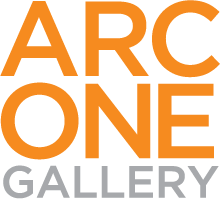Janet Laurence in her Sydney studio. Photograph: Jacqui Manning. Courtesy the Museum of Contemporary Art, Sydney.
JANET LAURENCE is renowned as one of Australia’s leading contemporary artists. Her ground-breaking practice responds to the cry of the natural world and addresses our relationship to nature. Laurence creates visually immersive environments forcing us to reflect on the mutability of nature, science, memory and loss. Through her extraordinary work, Janet Laurence offers us a deeply experiential and cultural relationship to the environment.
From March 1 - June 10, 2019, the MCA will present Janet Laurence: After Nature, a major survey exhibition of Janet Laurence's oeuvre. Curated by Rachel Kent, the exhibition will encompass three decades of Laurence’s unsurpassed practice, including key chapters such as Vanishing, Forensic Sublime, Birdsong, Deep Breathing and Cellular Gardens alongside Theatre of Trees, a new work that addresses our cultural, political and biological relationship to trees.
Janet Laurence: After Nature will explore the critical issues facing the environment and the natural world: the epoch of the Anthropocene. For Laurence, “the ecological crisis demands us to shift our focus from a human-centred perspective to a broader multi-species, environmental approach”. Within the recognised threat to so much of our world, this exhibition explores what it might mean to heal, albeit metaphorically, the natural environment, fusing this with a sense of communal loss and search for connection with powerful life-forces.
As Laurence explains, “I create elemental and fugitive spaces that express ephemerality through a language of veiling, transparency and translucency to form enmeshed environments, slowed spaces that express porosity and fluidity and a fusion with the environment. There are no boundaries but membranes.”
Alongside the exhibition, there will be a series of public programs, including: Talking Trees, a collaboration with Sydney University where philosophers, poets and scientists bring aspects of trees to a public audience; and Janet Laurence's interactive The Elixir Lab, a performative installation which was recently shown at the Inhotim Institute, Brazil.
Janet Laurence is a Sydney-based artist who exhibits nationally and internationally. Her work is included in museum, university, corporate and private collections as well as within architectural and landscaped public places. Key collections include: NGA, Canberra; AGNSW, Sydney; NGV, Melbourne; QAG, Brisbane; AGSA, Adelaide; Artbank Australia; Macquarie Bank Collection; and Kunstwerk Summlung Klein, Germany.
Recent significant projects include: Listen, to the Sound of Plants, Australian Tapestry Workshop, Melbourne (2017); The Pleasure of Love, October Salon, Belgrade (2016); Deep Breathing: Resuscitation for the Reef, for the Paris Climate Change Conference (2015) and the Paris International Contemporary Art Fair (2015), followed by the installation Deep Breathing at the Australian Museum, Sydney (2016); Tarkine for a World in Need of Wilderness, Macquarie Bank Foyer, London (2011); In Your Verdant View, Hyde Park Building, Sydney (2010); Waterveil, CH2 Building for Melbourne City Council; Memory of Lived Spaces, Changi T3 Airport Terminal, Singapore; Elixir, permanent installation for Echigo-Tsumari Art Triennial, Japan (all 2006); The Australian War Memorial (in collaboration with TZG Architects), Hyde Park, London (2003); In the Shadow, Sydney 2000 Olympic Park, Homebush Bay (2000); Veil of trees, Sydney Sculpture Walk (with Jisuk Han); 49 Veils, award-winning windows for the Central Synagogue, Sydney (with Jisuk Han, 1999); The Edge of the Trees (with Fiona Foley), Museum of Sydney (1994); and The Tomb of the Unknown Soldier, Australian War Memorial, Canberra (with TZG Architects, 1993).
Laurence has been a recipient of Rockefeller, Churchill and Australia Council fellowships; recipient of the Alumni Award for Arts, UNSW; and is currently visiting fellow at the NSW University Art and Design; Australian representative for the COP21/FIAC, Artists 4 Paris Climate 2015 exhibition; visiting fellow of the 2016/2017 Hanse-Wissenschaftskolleg (HWK) foundation fellowship; and artist in residence at the Australian Museum.
Her work, The matter of the masters, was recently shown at AGNSW in association with the Rembrandt and Dutch Masters exhibition.

